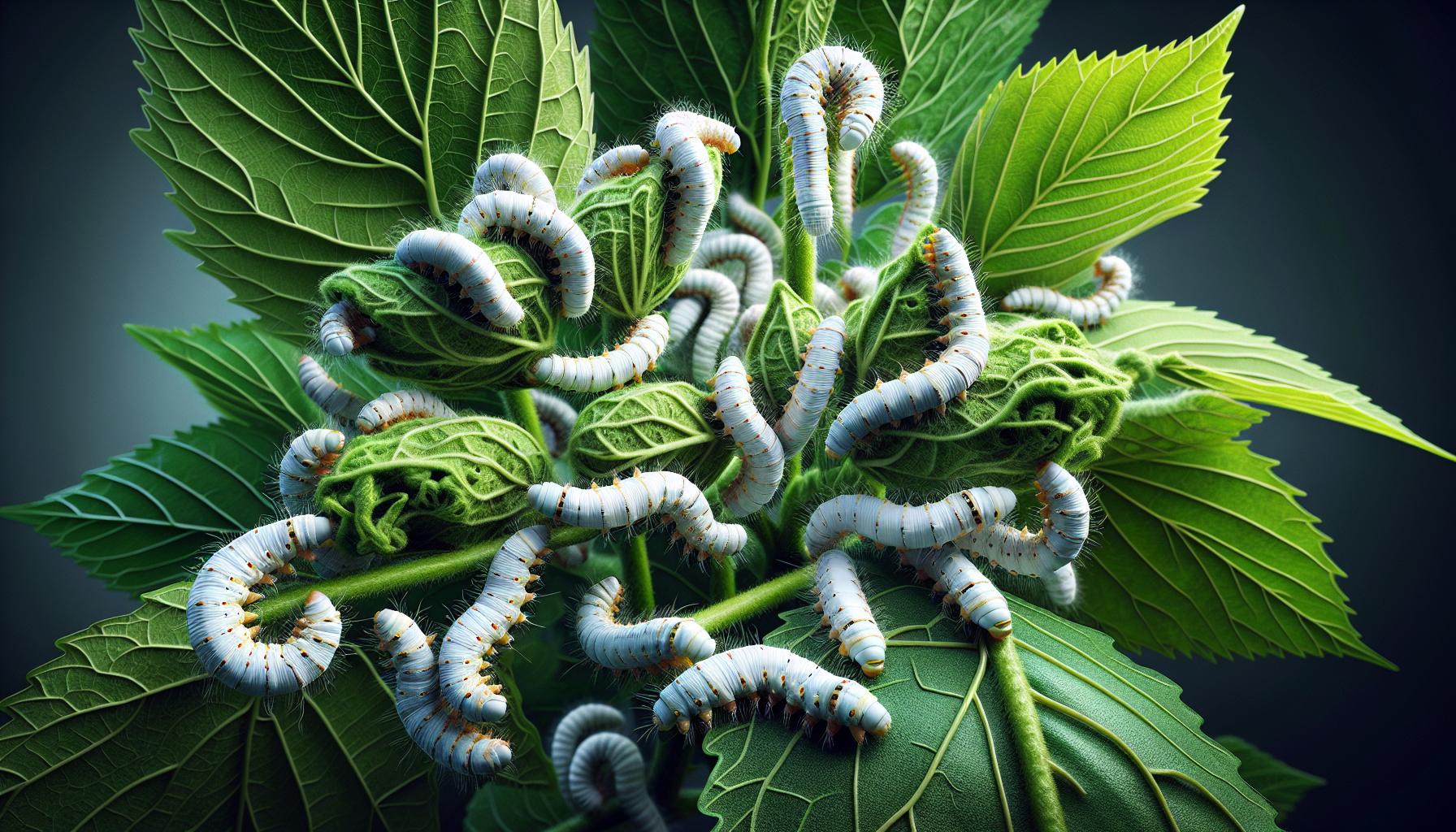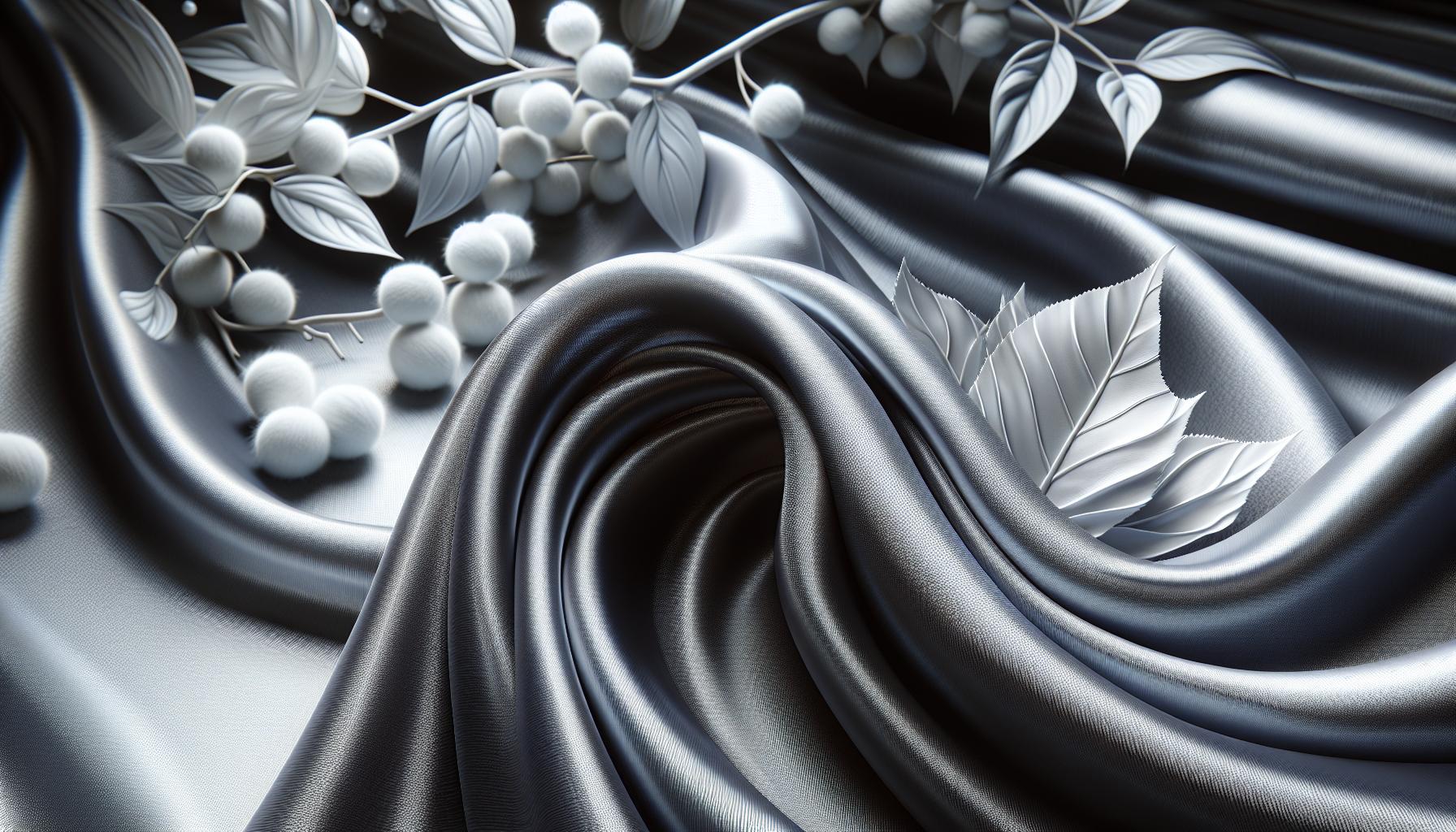When it comes to discovering the finest in mulberry silk, Slipintosoft stands out as a leading provider of luxurious silk products that combine elegance and comfort. This article delves into the origins of mulberry silk, its unique production process, and the benefits it offers compared to other types of silk. Understanding mulberry silk not only enhances one’s appreciation for this exquisite material but also guides consumers in making informed choices for sustainable and high-quality textiles.
What Is Mulberry Silk
Mulberry silk is a natural fiber produced by the Bombyx mori silkworms, which primarily feed on mulberry leaves. This type of silk represents approximately 90% of the world’s silk production. Known for its exceptional softness, luster, and durability, mulberry silk stands out among other silk varieties.
The production process of mulberry silk involves sericulture, where silkworms are cultivated to spin cocoons. These cocoons are carefully harvested and boiled to extract the long silk threads. The resulting fibers are smooth and strong, giving mulberry silk its luxurious quality.
Key characteristics of mulberry silk include:
- Softness: Mulberry silk feels gentle against the skin, making it ideal for clothing and bedding.
- Durability: The fibers have a high tensile strength, ensuring longevity.
- Hypoallergenic Properties: It resists dust mites and mold, reducing allergic reactions.
- Moisture Wicking: Mulberry silk effectively absorbs moisture, keeping the body comfortable.
Due to its superior qualities, mulberry silk is a preferred choice in fashion and home decor, appealing to those who value high-quality textiles.
Origins of Mulberry Silk

Mulberry silk, derived from the Bombyx mori silkworm, traces its origins back thousands of years, primarily in China. This silk represents approximately 90% of the world’s silk production due to its unique cultivation methods.
The Silkworm Life Cycle
The life cycle of the Bombyx mori includes four distinct stages: egg, larva, pupa, and adult. The process begins when eggs hatch into larvae, which consume mulberry leaves. Over the course of 25 to 30 days, these larvae undergo several molts, growing larger with each phase. Once fully grown, they enter the pupa stage, where they spin cocoons. After about 10 to 14 days, mature silkworms emerge as adult moths, completing their cycle. These stages are crucial for producing high-quality silk.
The Role of Morus Alba
Morus alba, commonly known as the white mulberry tree, plays an essential role in the silk production process. The preferred food source for Bombyx mori, Morus alba leaves are rich in nutrients that support rapid growth and silk production. Cultivators often plant these trees in large quantities to ensure a consistent supply of leaves. The nutritional quality of the leaves directly influences the silk’s texture, strength, and overall quality. Therefore, the relationship between mulberry trees and silkworms significantly impacts the silk industry.
Characteristics of Mulberry Silk
Mulberry silk possesses several distinct characteristics that make it a preferred choice for textiles. Its unique qualities stem from the production process and the specific diet of the Bombyx mori silkworm.
Texture and Feel
Mulberry silk has a soft, smooth texture that feels luxurious against the skin. Its fine fibers create a lustrous finish, enhancing any garment or fabric. The silk’s breathable nature contributes to its comfort, making it suitable for year-round wear. Additionally, the fabric drapes beautifully, providing an elegant silhouette in fashion and home decor.
Strength and Durability
Mulberry silk is known for its exceptional strength and durability. The long fibers produced during the sericulture process result in a robust material resistant to wear and tear. When properly cared for, mulberry silk items can last for years, maintaining their structural integrity and appearance. This resilience makes it a valuable investment for consumers seeking longevity in their textile choices.
Benefits of Mulberry Silk
Mulberry silk offers several advantages that appeal to consumers. Its unique properties contribute to health and environmental benefits.
Health Benefits
Mulberry silk possesses hypoallergenic properties, making it suitable for sensitive skin. It’s resistant to dust mites, mold, and mildew, reducing the risk of allergies. Additionally, the fabric’s breathability helps regulate body temperature, providing comfort throughout different seasons. Mulberry silk also contains natural proteins and amino acids, which can promote skin health and hydration. These compounds support collagen production, potentially reducing the appearance of wrinkles and fine lines.
Environmental Impact
The production of mulberry silk supports sustainable practices. Unlike synthetic fibers, mulberry silk is biodegradable, minimizing waste in landfills. The sericulture process requires fewer chemicals compared to conventional cotton farming. However, certain practices in mulberry silk production, like water usage and land management, play a critical role in environmental sustainability. Choosing ethically sourced mulberry silk can significantly reduce overall environmental impact, promoting eco-friendly fashion choices.
Uses of Mulberry Silk
Mulberry silk serves multiple practical applications due to its unique properties and luxurious feel, making it a favored choice across various industries.
Fashion and Textiles
Mulberry silk is widely utilized in fashion and textiles. Its soft texture combines elegance and comfort, making it a popular material for clothing items like dresses, blouses, and scarves. Designers favor mulberry silk for its ability to drape beautifully, enhancing garments’ aesthetic appeal. Additionally, the fabric’s natural sheen adds a touch of sophistication, making it suitable for both formal and casual wear.
Additionally, mulberry silk is often blended with other fibers to improve durability and versatility, expanding its use into activewear and lingerie. The hypoallergenic nature of mulberry silk makes it ideal for individuals with sensitive skin, ensuring comfort during wear.
Home Decor
Mulberry silk plays a significant role in home decor, contributing a luxurious touch to various furnishings. It’s commonly used in items such as pillowcases, curtains, and upholstery. The fabric’s breathability and moisture-wicking properties make it suitable for bedding, promoting better temperature regulation during sleep.
Additionally, the elegant finish of mulberry silk enhances the overall ambiance of a space, elevating the aesthetic quality of home interiors. Designers and homeowners use mulberry silk’s durability and easy maintenance, ensuring that decor items remain stunning and functional over time.
Conclusion
Mulberry silk stands out not only for its luxurious feel but also for its remarkable durability and health benefits. Its unique production process and the careful nurturing of Bombyx mori silkworms highlight the craftsmanship behind this exquisite fabric. As consumers become more conscious of sustainability and ethical sourcing, mulberry silk presents an attractive option that aligns with eco-friendly values.
Whether used in fashion or home decor, its versatility and elegance make it a timeless choice. Embracing mulberry silk means investing in quality while enjoying the numerous advantages it offers, from comfort to skin health. This exceptional textile continues to engage those who seek both beauty and practicality in their selections.
Frequently Asked Questions
What is mulberry silk?
Mulberry silk is a high-quality silk produced by the Bombyx mori silkworms, which primarily feed on mulberry leaves. Known for its luxurious softness, durability, and hypoallergenic properties, this silk represents approximately 90% of the world’s silk production.
How is mulberry silk produced?
Mulberry silk is produced through a process called sericulture, where silkworms spin cocoons from long silk threads. After harvesting, the cocoons are boiled to extract these threads, resulting in the smooth, strong fibers known for their exceptional qualities.
What are the key characteristics of mulberry silk?
Mulberry silk is exceptionally soft and durable, with moisture-wicking abilities. It is hypoallergenic, making it suitable for sensitive skin, and boasts a luxurious drape that enhances its appeal in both fashion and home decor.
Where does mulberry silk originate?
The history of mulberry silk dates back thousands of years to China. The unique production process and the use of the Morus alba (white mulberry tree) as a food source for silkworms play a significant role in its origins.
What are the health benefits of mulberry silk?
Mulberry silk contains natural proteins and amino acids that may promote skin health by hydrating and reducing the appearance of wrinkles. Its hypoallergenic properties also make it a great choice for sensitive skin.
Is mulberry silk an eco-friendly option?
Yes, mulberry silk production supports sustainable practices. It is biodegradable and requires fewer chemicals compared to traditional cotton farming, making it an environmentally friendly textile choice.
How is mulberry silk used in fashion and home decor?
In fashion, mulberry silk is popular for clothing items like dresses and scarves, thanks to its soft feel and elegance. In home decor, it enhances furnishings like pillowcases and curtains, adding a luxurious touch and improving temperature regulation during sleep.

